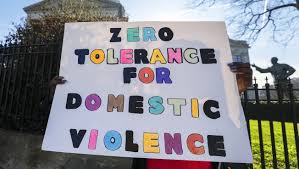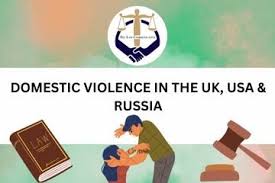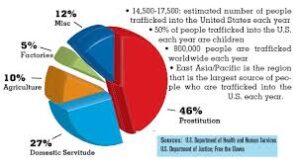Introduction

Domestic violence is a pervasive issue that affects millions of individuals and families across the United States. Despite increased awareness and efforts to combat it, domestic violence remains a significant challenge with far-reaching consequences. This essay explores the complex dynamics of domestic violence in the USA, examining its root causes, impacts on victims and society, and the strategies employed to address and prevent it.
Understanding Domestic Violence
Domestic violence encompasses a range of abusive behaviors, including physical, sexual, emotional, and economic abuse, perpetrated by one intimate partner against another. It occurs across all demographic groups and can affect individuals regardless of age, gender, race, socioeconomic status, or sexual orientation. Domestic violence often involves a pattern of control and coercion, with perpetrators seeking to assert power and maintain dominance over their victims.
Causes of Domestic Violence

The root causes of domestic violence are multifaceted and can be influenced by individual, relational, community, and societal factors. At the individual level, perpetrators may have a history of trauma, substance abuse, mental illness, or personality disorders that contribute to their abusive behavior. Relational factors such as jealousy, possessiveness, and poor communication skills can also fuel conflict and violence within intimate relationships.
Community and societal factors
including cultural norms, gender inequality, and socioeconomic disparities, play significant roles in shaping attitudes towards domestic violence and perpetuating cycles of abuse. Patriarchal structures that privilege male authority and control contribute to the normalization of violence against women and inhibit victims from seeking help and support. Furthermore, economic stressors, lack of affordable housing, and limited access to resources and support services can exacerbate the risk of domestic violence within marginalized communities.
Impacts of Domestic Violence

Domestic violence has profound physical, psychological, and social consequences for victims, survivors, and their families. In addition to physical injuries and chronic health conditions, victims of domestic violence may experience trauma, anxiety, depression, and post-traumatic stress disorder (PTSD). Children exposed to domestic violence are at increased risk of behavioral problems, developmental delays, and long-term psychological harm.
The social impacts of domestic violence

extend beyond individual victims to affect families, communities, and society at large. Domestic violence undermines trust, erodes social cohesion, and perpetuates cycles of violence across generations. It also imposes significant costs on healthcare systems, criminal justice systems, and social welfare agencies, as victims seek medical treatment, legal protection, and support services.
Interventions and Responses
Addressing domestic violence requires a coordinated and multi-sectoral approach that encompasses prevention, intervention, and support services. Primary prevention efforts aim to address the root causes of domestic violence by challenging harmful attitudes and promoting healthy relationships through education, outreach, and community mobilization. Schools, workplaces, and faith-based organizations play important roles in promoting gender equality, bystander intervention, and nonviolent conflict resolution.
Intervention strategies
focus on providing immediate safety and support to victims while holding perpetrators accountable for their actions. Law enforcement agencies, prosecutors, and courts collaborate to enforce protective orders, prosecute offenders, and connect victims with resources such as emergency shelter, counseling, and legal advocacy. Victim advocacy organizations offer comprehensive services tailored to the needs of survivors, including safety planning, counseling, and housing assistance.
Furthermore
efforts to address domestic violence must prioritize the needs of marginalized and underserved populations, including immigrants, LGBTQ+ individuals, people with disabilities, and Indigenous communities. Culturally competent services, language access, and trauma-informed care are essential to ensure that all survivors receive equitable and effective support.
Prevalence and Statistics:
Domestic violence is alarmingly prevalent in the United States. According to the National Intimate Partner and Sexual Violence Survey (NISVS), conducted by the Centers for Disease Control and Prevention (CDC), nearly 1 in 4 women and 1 in 7 men have experienced severe physical violence by an intimate partner in their lifetime. Additionally, millions of individuals experience other forms of domestic abuse, including emotional, psychological, and sexual abuse.
Types of Abuse:
Domestic violence encompasses various forms of abuse, including physical, sexual, emotional, psychological, and financial abuse. Physical abuse involves acts of violence or assault, such as hitting, punching, or choking. Sexual abuse involves coercion or force to engage in sexual activity without consent. Emotional and psychological abuse includes behaviors aimed at controlling or manipulating the victim, such as intimidation, threats, and isolation. Financial abuse involves controlling the victim’s access to financial resources or preventing them from obtaining employment or education.
Impact on Victims:
Domestic violence has profound and lasting impacts on victims’ physical and mental health, as well as their overall well-being. Victims may suffer from physical injuries, chronic pain, and long-term health conditions as a result of abuse. Additionally, survivors often experience psychological trauma, including anxiety, depression, PTSD, and low self-esteem. Domestic violence can also disrupt victims’ social relationships, employment, and financial stability, leading to isolation and economic dependence on the abuser.
Barriers to Seeking Help
: Many victims of domestic violence face significant barriers to seeking help and accessing support services. These barriers may include fear of retaliation from the abuser, lack of awareness about available resources, financial dependence, cultural or religious beliefs that discourage reporting abuse, and concerns about the impact on children or family members. Immigrant survivors may face additional barriers, such as language barriers, fear of deportation, and lack of legal status.
Intersectionality and Marginalization:
Domestic violence intersects with various forms of oppression, including racism, sexism, homophobia, transphobia, ableism, and classism. Marginalized communities, including Black, Indigenous, and people of color (BIPOC), LGBTQ+ individuals, people with disabilities, and undocumented immigrants, are disproportionately affected by domestic violence and face unique challenges in accessing support services. Intersectional approaches to addressing domestic violence recognize the interconnectedness of multiple forms of oppression and strive to center the experiences and needs of marginalized survivors.

legal and Policy Responses:
Federal and state laws provide legal protections for victims of domestic violence and hold perpetrators accountable for their actions. These laws include civil protection orders, criminal prosecution of domestic violence offenses, and provisions for emergency shelter, counseling, and support services. Additionally, the Violence Against Women Act (VAWA) and other federal legislation allocate funding for domestic violence prevention, intervention, and support programs.
Community Resources and Support Services:
A wide range of community-based organizations, shelters, hotlines, and advocacy groups provide support and services to survivors of domestic violence. These resources may include emergency shelter, crisis counseling, legal advocacy, support groups, and assistance with safety planning and accessing basic needs. Hotlines such as the National Domestic Violence Hotline offer confidential support and referrals to local resources for individuals experiencing abuse.
Prevention and Education Efforts:
Prevention efforts aim to address the root causes of domestic violence and promote healthy relationships through education, awareness-raising, and community mobilization. School-based programs, workplace training initiatives, and public awareness campaigns challenge harmful gender norms, teach bystander intervention skills, and promote consent and respectful communication. Additionally, prevention efforts may target at-risk populations, such as youth, LGBTQ+ individuals, and immigrants, to address unique risk factors and barriers to seeking help.
By understanding the complexities of domestic violence and implementing comprehensive strategies that address its root causes, support survivors, and promote prevention, the USA can work towards creating safer and more equitable communities for all individuals. Collaboration among government agencies, law enforcement, community organizations, and survivors themselves is essential to effectively address domestic violence and build a future free from abuse and violence.
Conclusion

Domestic violence is a complex and pervasive issue that requires a comprehensive and multifaceted response. By addressing the root causes of domestic violence, promoting gender equality, and strengthening support services for survivors, the USA can work towards building safer, healthier communities for all individuals and families. Through collective action and collaboration across sectors, we can create a future free from violence and abuse, where all individuals can live with dignity, respect, and safety.



